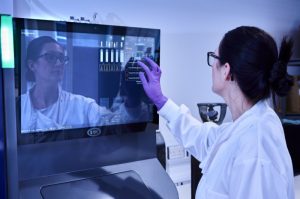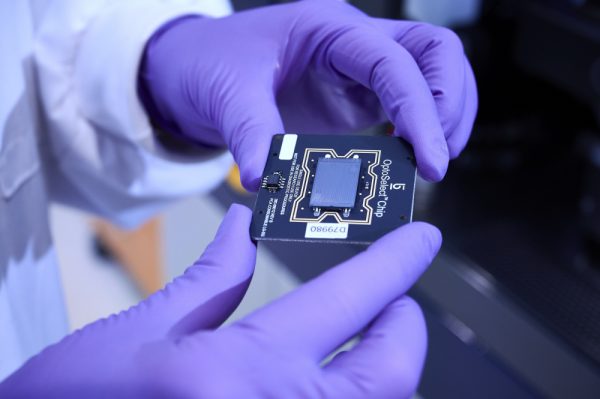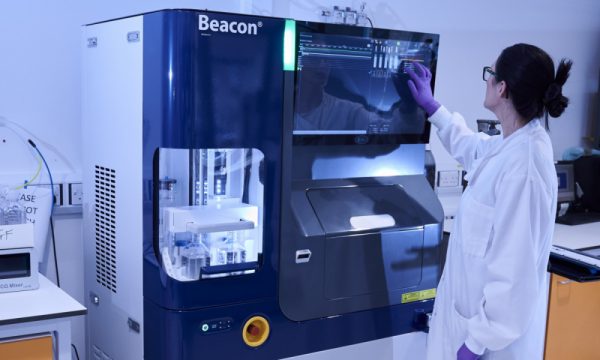

New cells detect disease and target treatment
No such thing as an average patient
Most diseases are treated with ‘one size fits all’ therapy, based on an ‘average’ patient. This is problematic because we are all different: individual patients will react differently to the same dose of medicine due to many factors such as their size, ethnicity, genetic make-up, and what stage of the disease they are at. The consequence is that the timing, location and dosage of administered therapeutics often do not result in the desired effect for some patients (sometimes causing unintended side effects through their effects on other parts of the body) while the treatment works perfectly well for others.
As society changes and the population ages, the standard therapy will be less successful as patients are more likely to have multiple health issues and thus be taking multiple medicines that can interact with each other. Older patients are also more likely to have chronic conditions that are ongoing over a long period (including cardiovascular disease and metabolic syndrome).
Biopharmaceutical industry demand for more efficient production of biologic drugs
Global spending on medicines is expected to grow to nearly $1.6 trillion by 2025, excluding spending on COVID-19 vaccines, according to the latest report* by IQVIA. Biologics represent the largest aggregate contributor to growth in the next five years.
Biologic drugs (for example, monoclonal antibodies, mAbs) based on recombinant DNA technology have transformed the treatment of life-limiting diseases including cancer, haemophilia and rheumatoid arthritis. The recent explosive growth in the biologics sector is set to continue with applications in precision medicine and personalised healthcare, and new complex biologics in the drug discovery pipeline (for example, bispecific, trispecific, conjugates). The intrinsic complexity of these life-saving drugs is too challenging for chemical synthesis and requires use of living cells, most commonly Chinese hamster ovary (CHO) cells. However, forcing CHO cells to produce proteins outside of their natural repertoire is complex, requiring very significant trial and error experimentation. As a result, the bio-manufacturing process is time-consuming and expensive. The biopharmaceutical industry is therefore interested in new strategies and production platforms to reduce cost.
Unique expertise
The Rosser lab at the University of Edinburgh has a unique set of expertise in engineering biology to design and engineer biologically based parts, new devices and systems, and to redesign existing, natural biological systems.
Professor Susan Rosser and her team are working as part of the UK Centre for Mammalian Synthetic Biology to pioneer the development of the underpinning tools and technologies needed to implement engineering principles and realise the full potential of engineering biology in mammalian systems.
Cutting-edge facilities
The recent acquisition of the £2 million Berkeley Lights Beacon System by the Edinburgh Genome Foundry gives the Rosser lab access to the only such instrument in an academic setting in Europe, and a unique opportunity to phenotypically screen thousands of individual engineered cells. This uses the full capability of the Beacon platform in single-cell cloning, imaging and phenotyping, using a CHO cell line to produce commercial biologics.
Surveillance cells provide customised treatment
The team have developed implantable or circulating ‘surveillance’ cells that can recognise disease-related changes and the molecular hallmarks of disease (biomarkers), process the information, and then produce an appropriate therapeutic molecule (for example, an antibody) at the correct location, correct concentration and correct time to treat the disease before it fully develops or progresses.
In the short to medium term, healthcare industries will benefit in three ways:

Outcomes
Results have been vital to generating interest in the Beacon through demonstration of its utility, especially for projects on biologics with strong commercial interest. The experience gained developing and optimising Beacon workflows has allowed project staff to promote academic expertise at the Edinburgh Genome Foundry to current and new academic and industry partners.
At present there are two pilot studies with industrial partners at the contract stage. Discussions are ongoing for further work after these pilot studies that should bring substantial additional income to the Edinburgh Genome Foundry.
The team have also provided costings for the inclusion of Beacon-based workflows in several grants by members of the Centre for Mammalian Synthetic Biology, and expect to hear the results of applications soon.
Funding and support
The Royal Academy of Engineering has provided funding of £1.3 million for Professor Rosser to focus full-time for 10 years on this research, development and commercialisation.
Edinburgh Innovations (EI) also helped the Rosser Lab to secure a grant from the Engineering and Physical Sciences Research Council Impact Acceleration Account (EPSRC IAA) to support this work with potential commercial applications, and with other funding, for example from Prosperity Partnership with Fujifilm worth £6 million in total.
EI will also be involved with the next steps in the development of the lab’s work project, which include advertising the Edinburgh Genome Foundry and its capabilities to current and new academic and industry partners. EI will also support the protection of new intellectual property and help negotiate future licensing agreements. And finally, EI will support the Edinburgh Genome Foundry on all future projects with industry partners.
My greatest hope is that the technologies we are developing now in engineering biology will have a huge impact on solving problems in medicine. I would like to see safe, effective and affordable cell and gene therapies routinely used in the clinic to diagnose and treat challenging, currently intractable, diseases.
Susan Rosser, Professor of Synthetic Biology, School of Biological Sciences and School of Engineering
* Global Medicine Spending and Usage Trends: Outlook to 2025, The IQVIA Institute Report, Apr 28, 2021

Beacon® at the Edinburgh Genome Foundry (EGF)
Specialisms
Technologies available
The integration of the Beacon® system (currently the only instrument of its kind in a European academic establishment) builds on and expands Edinburgh Genome Foundry’s sophisticated automated platform. The system is a game-changing platform that uses light to move individual cells around and trap them in isolated chambers (nanopens). Cells are maintained in a precisely controlled environment and a large number of assays can be performed repeatedly on thousands of single cells while high-resolution images (5-colour fluorescence and brightfield) of single cells are captured over time.
Identifying cells with useful medical or research properties involves the analysis of thousands of cells to isolate those with the optimal properties, prior to cell line selection and scaling up of their production. The Beacon® provides researchers with a high-throughput one-stop-shop that automates and simplifies this process - improving accuracy, reducing costs and shortening timescales from months to days. Use of EGF’s Beacon® enables our academic and industrial customers to make important discoveries at an unprecedented speed and scale providing us with the ability to identify the “needle in a haystack” cell.
EGF provides open access to the system (fee for service), making it available to new and existing customers in academia and industry across the world.
Available high-throughput workflows:
More details
Contact us to explore how the EGF team and Beacon® can help accelerate your research and development needs today.
Dr Rennos Fragkoudis, Head of EGF.
r.fragkoudis@ed.ac.uk
Find out more about our Beacon® system.

We will provide support and funding to help you deliver your project. Our Business Interaction Vouchers support industry-academic collaborations with up to £25,000 per project (conditions apply).
Contact Dr Emma Elliott to start working together with our experts.

Discover the University of Edinburgh's expert Genotype to Phenotype facilities. Our technical experts will help your team make new discoveries and translational developments from genotype to phenotype. Our specialist support will guide you through the journey every step of the way.